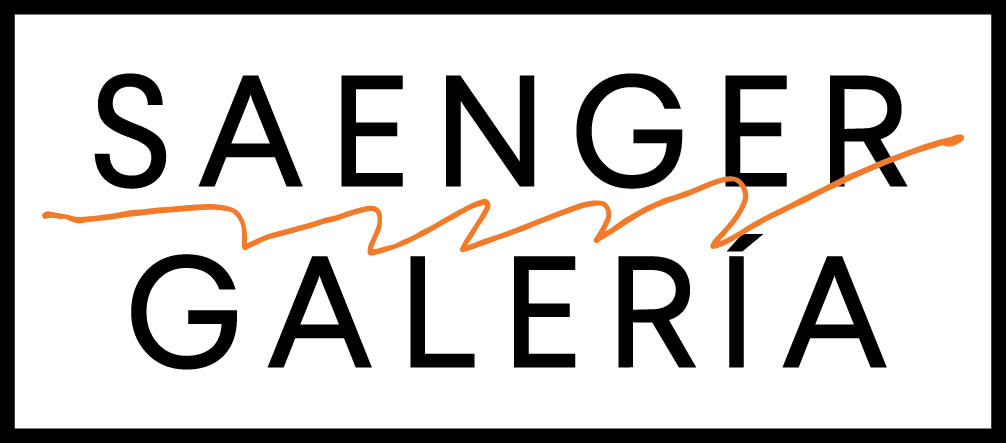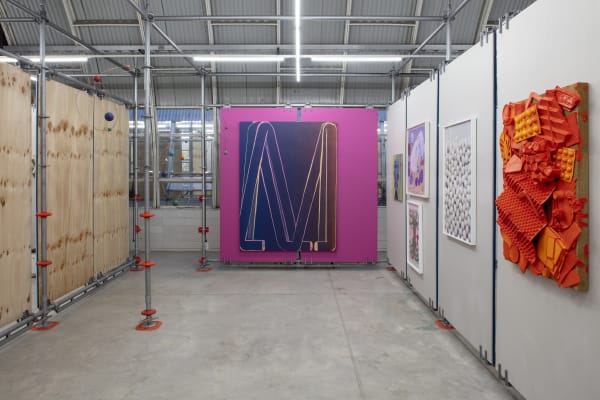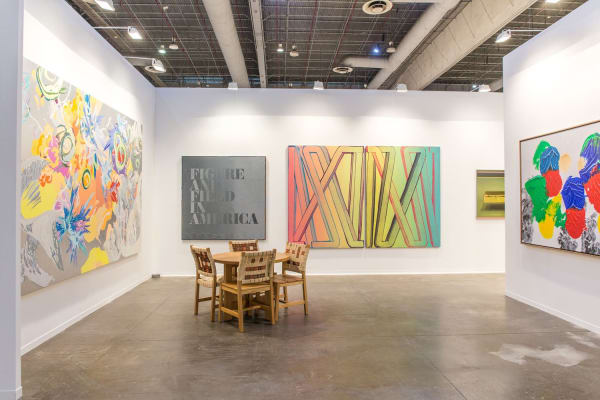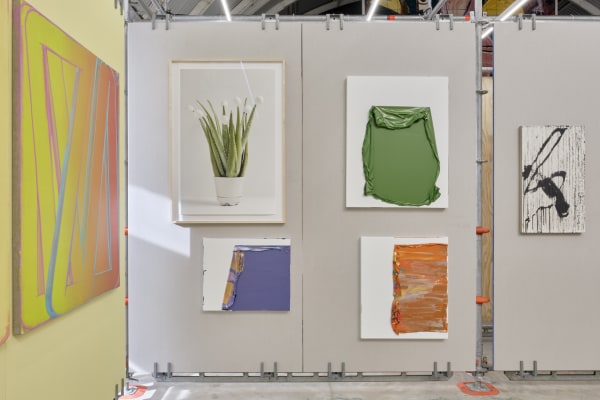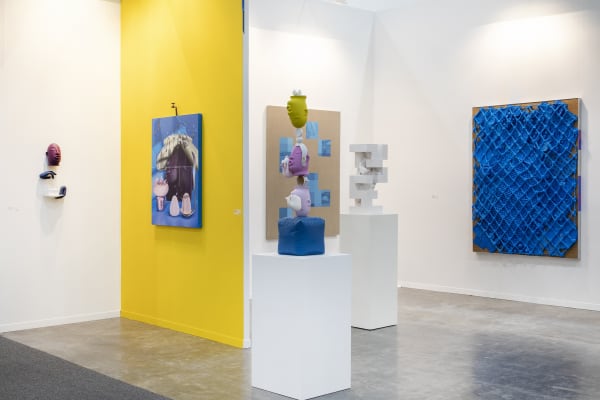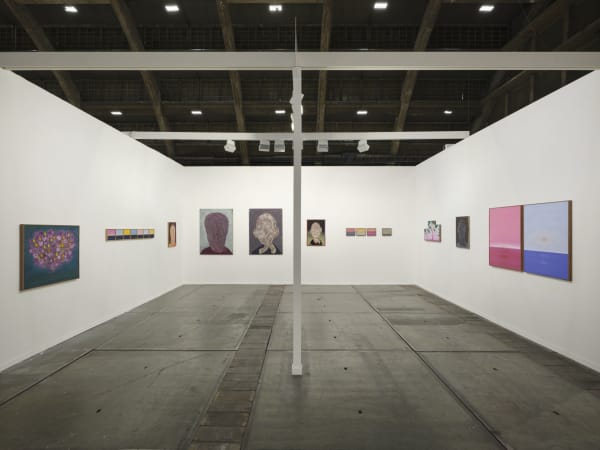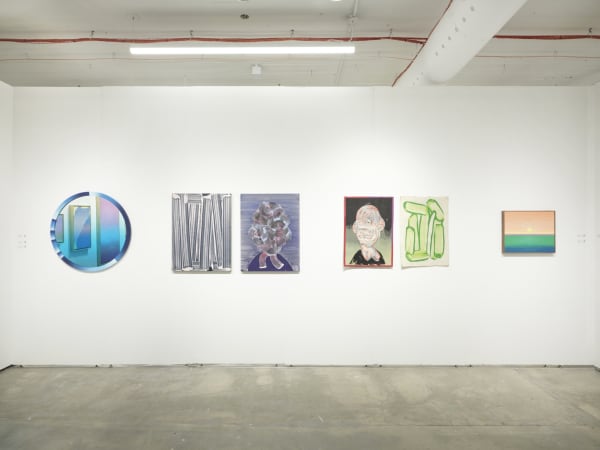Best of all worlds by Robert Janitz: Curated by Gianni Jetzer
Robert Janitz has a long-standing interest in the dialogue between architecture and painting. 3 years ago, on his first trip to Mexico City he discovered Luis Barragan and first visited Casa Gilardi. Now living in Mexico City it became the obvious project to realize. The perfect setting for a confrontation of color and space. Barragán dematerializes architecture into light and space, Janitz materializes architectural shapes in painting.He conceived it as a chess game: Check ! to various architectural situations around the edifice.Besides paintings Janitz started to experiment with Ceramic glazes at renowned Ceramica Suro in Guadalajara, the birthplace of Luis Barragan and locus of his first building designs.
Mount Fuji
On the Chromatic Divergences in the Works of Robert Janitz, Luis Barragán, and Rainer Werner Fassbinder By: Gianni Jetzer
With very few exceptions, architecture is neutral ground in the context of an art exhibition. It is the place that embeds the artwork creating a soothing perceptive frame that allows its content to unfold. One of these exceptions is with certainty the architecture of Luis Barragán: Casa Gilardi is everything, but a white cube in its use of colors that openly competes with any painting hung in its proximity. It is a three-dimensional painting itself in dialogue with nature and its surroundings. The importance of color in the oeuvre of the great Mexican architect has been repeatedly a subject in literature: "For Barragán, light, and colour qualifies and transforms space and he used it with the same freedom as a painter, trying out different solutions. (...) Johannes Itten, Josef Albers and Kandinsky are immediate references as one experiences three-dimensional colour interactions, with interplays of depth of colour and shape, interactions of planes of colour in terms of adjacent volumetry, juxtaposition of tones and the result of the various scenarios that the observer creates, when visually interacting with the pool.”
Interestingly the spatial concept of Barragán applied to Casa Gilardi works against the grain of the white cube. The walls of a room are rarely ever painted in a uniform color. The architect detaches the wall from its architectural body, releasing it into a solitary state, overcoming any simplistic Cartesian concept, not unlike a canvas that becomes a window into the world.
But what happens when a painter is invited over to the house of an “architect-painter”? The color scheme of Robert Janitz is as vibrant as Barragán’s. It is all about extreme pairings of complementary colors unleashed to compete with each other. While Barragán, the monochromist, could be considered a distant cousin of the Tucson, Arizona-based Swiss painter Olivier Mosset, Janitz brings an important additional layer to the table. His colors are further energized by a system of hieroglyphic signs that he applies in an almost somnambulistic state of mind. Using thick bill-sticker brushes, he creates a visual language that is close to the aesthetic of the street as e.g., the weathered surfaces of billboards, the traces of wet glue behind freshly installed posters, but also graffiti, especially the ones made with fire extinguishers. Compared to Europe, where most of the inner-city streets are cleaned and manicured to the max, the streetscapes in Mexico City contain a plethora of painterly signs, all made by accident or chance. The paintings of Robert Janitz transport the street into the house, inviting yet another layer of vernacular aesthetic in. The gestural energy contained in his pictures by reflecting their performative act of creation add an additional layer of life: the everyday.
Robert Janitz is an admirer of the great German filmmaker and director Rainer Werner Fassbinder, himself a great colorist who introduced particular concepts in the chromatic treatment for his films. In his movie Lola, he used Fujicolor celluloid, the most extreme product on the market, offering a sheer aggressive saturation: “The human skin, which is otherwise always the standard for the "naturalness" of color, here lacks the real nuances. Colors are masks on the faces: blue, pink, red, yellow. Like in a carnival, where people are beside themselves when they dress up, make up, mask.” In Janitz’ Volcano heads, the skin color is also determined by the painter's mind, leaving the naturalistic view behind to create a state of color that affects the viewer from the guts.
Although working in different fields, Robert Janitz, Luis Barragán, and Rainer Werner Fassbinder, each in their vision, climb(ed) new heights using color as imbuing form of conceptual expression.
Gianni Jetzer is an independent curator based in Zurich, Switzerland as well as the Curator-at-Large at the Hirshhorn Museum and Sculpture Garden in Washington DC.
